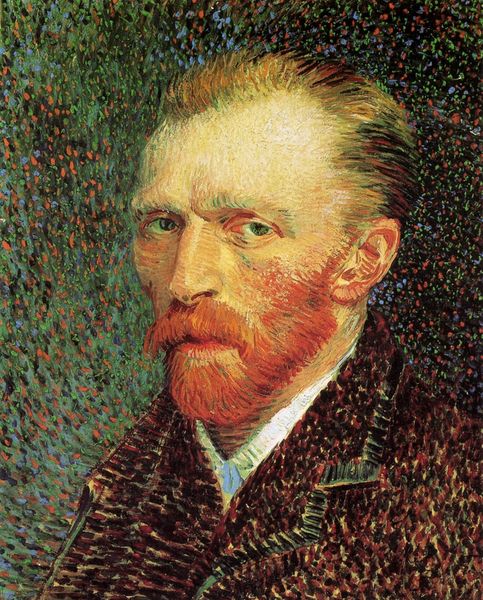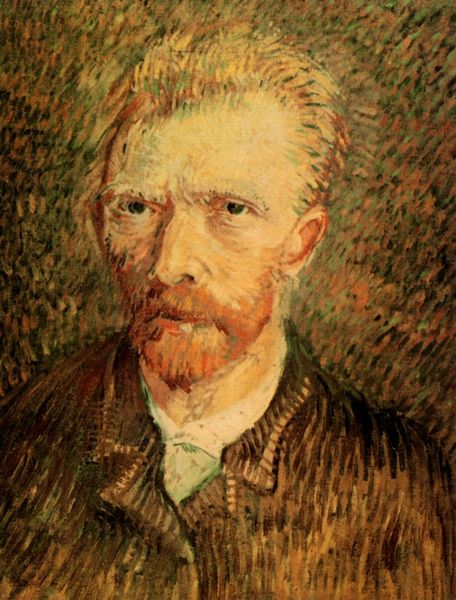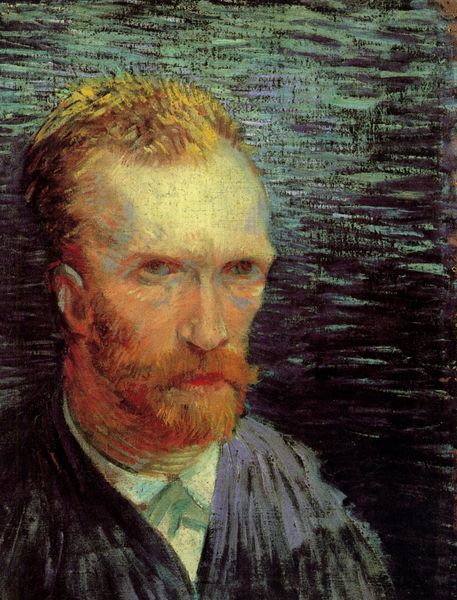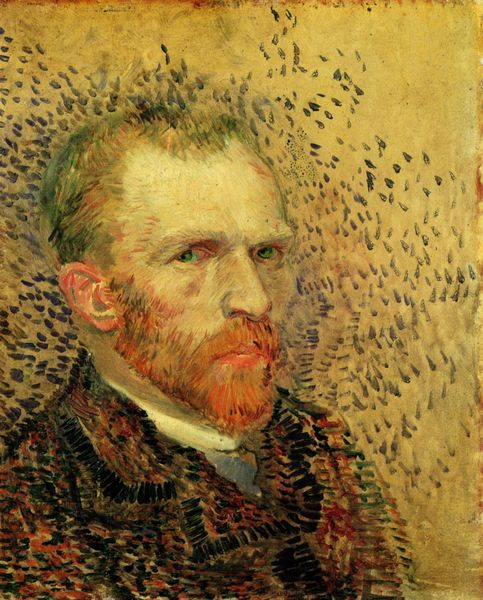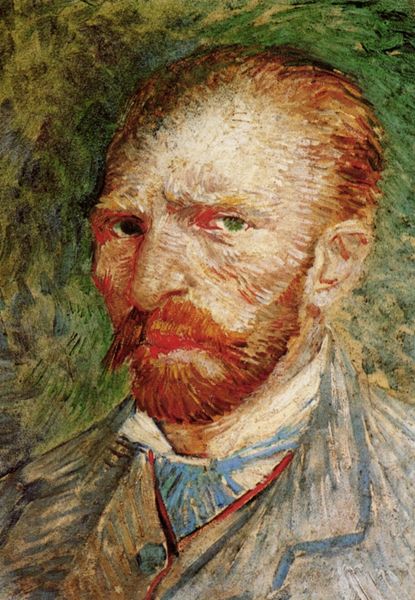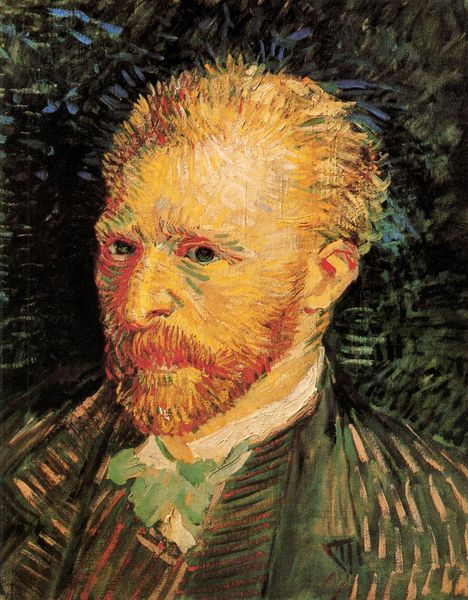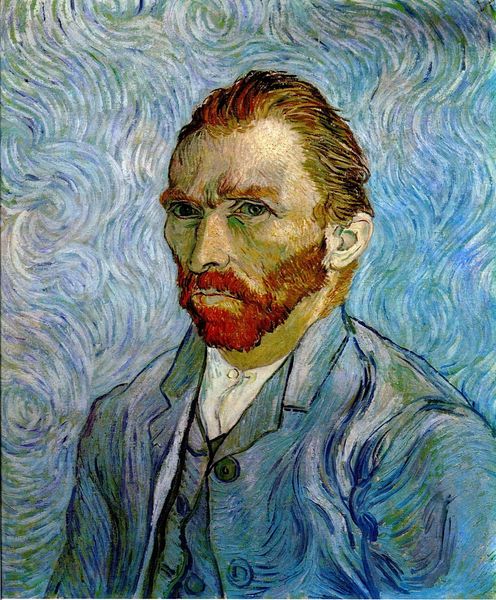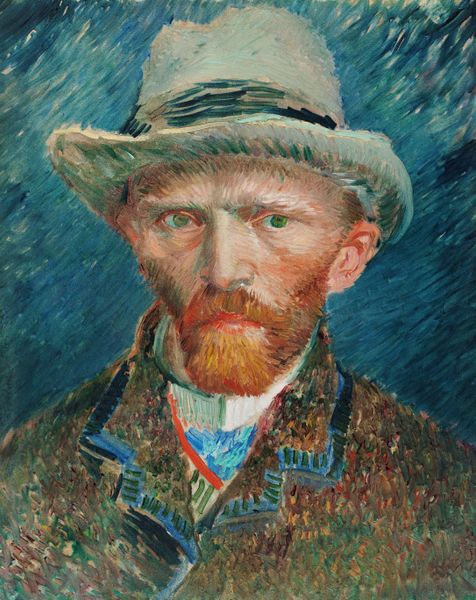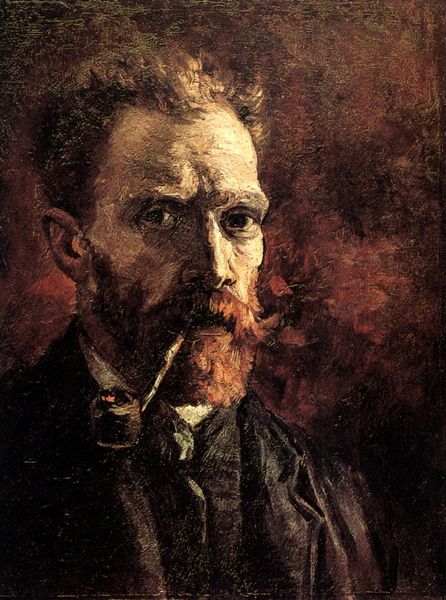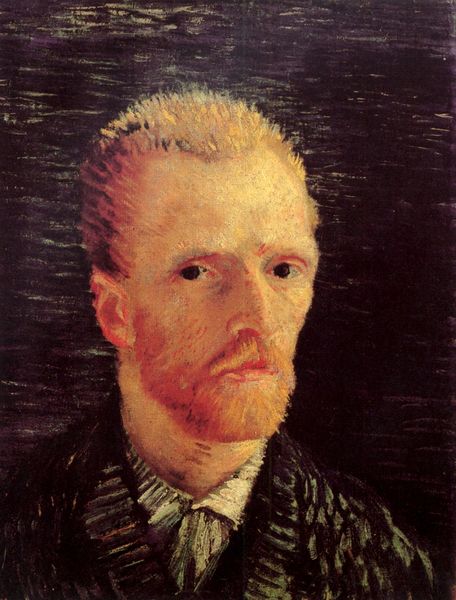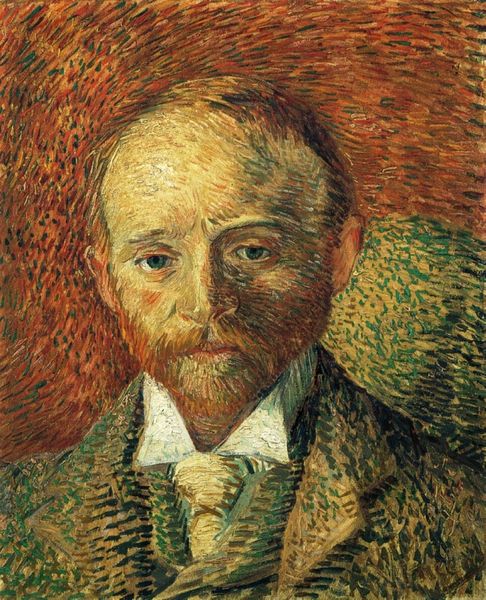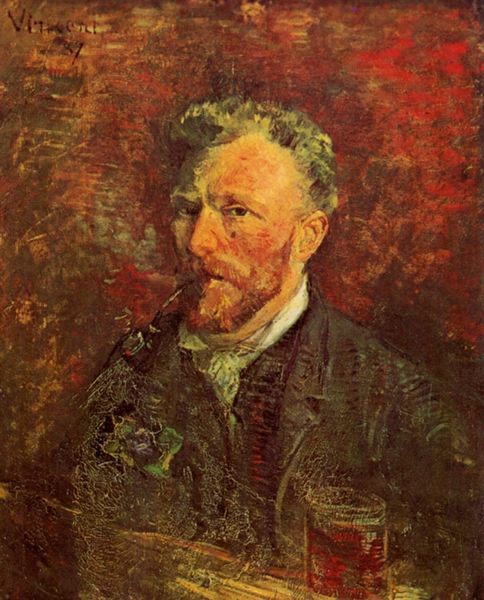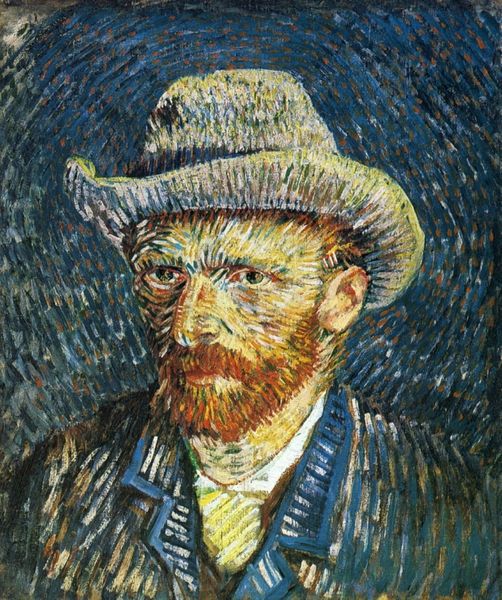
painting, oil-paint, impasto
#
portrait
#
self-portrait
#
portrait
#
painting
#
oil-paint
#
impasto
#
post-impressionism
#
modernism
Copyright: Public Domain: Artvee
Editor: We are looking at Van Gogh’s "Self-Portrait" from 1887, rendered in oil paint with such distinctive impasto. What immediately grabs me is the intensity of his gaze – it's almost confrontational. What do you see when you look at this painting? Curator: Beyond the undeniable intensity, I see a potent example of how artistic identity was being constructed and projected in the late 19th century. Van Gogh, in painting himself, participates in a visual discourse deeply shaped by the burgeoning art market and the growing cult of the artist. Editor: So it's more than just him looking in a mirror? Curator: Precisely. Consider the proliferation of artist self-portraits around this time. They weren’t simply exercises in skill, but canny marketing moves. These self-fashioned images were exhibited, reproduced, and consumed by a public eager to know the "genius" behind the art. It is essential to think about how this commodification of the artist changed what and how artists produced their art. Editor: That's a fascinating perspective. Does that explain why he made so many of them? Curator: Absolutely. Think about it – who controls the narrative in a self-portrait? Van Gogh. He's consciously constructing an image, playing with light, color, and composition to present a particular version of himself. Moreover, the public role of art demands these artworks be visible and contribute to national or other identities. Are these the images that societies want to broadcast? Or will they be hidden away because of social pressure and norms? These are critical questions to consider when engaging with art history. Editor: So much to think about. It really changes how I see these famous images. Curator: It challenges the idea of art being purely individualistic. Seeing Van Gogh, we see social and cultural forces at play.
Comments
No comments
Be the first to comment and join the conversation on the ultimate creative platform.
